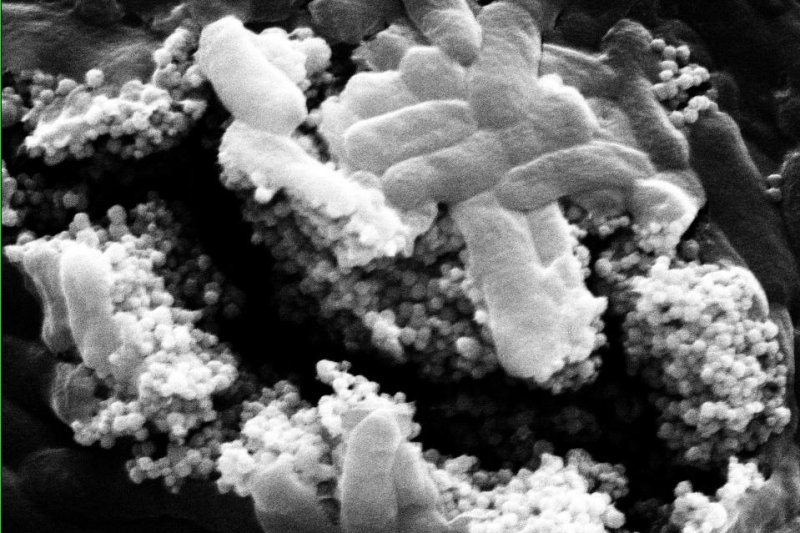A closeup image shows nanoparticle clusters, with phage viruses attached, seeking out and killing Escherichia coli bacteria. Photo by Alvarez Group/Rice University
Aug. 2 (UPI) -- A team of scientists from the United States and China have found a way to deploy viruses against biofilm-forming bacteria capable of fouling water distribution systems. The secret to their success is magnetization.
Bacteriophages are viruses that seek out and infect bacteria. But in a solution, these viruses disperse and fail to attack harmful bacteria in significant numbers. Enter magnetization.
Researchers at Rice University in Texas and the University of Science and Technology of China inserted bacteriophages into magnetized nanoparticle clusters. The technology allowed scientists to direct the viral clusters toward bacterial targets using a weak magnetic force.
"This novel approach, which arises from the convergence of nanotechnology and virology, has a great potential to treat difficult-to-eradicate biofilms in an effective manner that does not generate harmful disinfection byproducts," Pedro Alvarez, an environmental engineer at Rice, said in a news release.
In some instances, biofilms can be beneficials. They are welcomed in wastewater treatment plants, for example. But in water storage facilities, they can harbor potentially harmful microbes.
Scientists created the nanoclusters using carbon, sulfur and iron oxide molecules. A treatment of amino acids encouraged the bacteriophages to bond with the clusters.
Researchers deployed polyvalent bacteriophages, viruses capable of attacking a variety of bacteria strains, Escherichia coli and Pseudomonas aeruginosa.
In tests, plain bacteriophages killed just 40 percent of the bacteria. When the magnetized viral clusters were directed towards the biofilm using a weak magnetic force, the bacteriophages disrupted the biofilm and killed 90 percent of the bacteria.
Researchers detailed their new technology this week in the journal Environmental Science: Nano.















